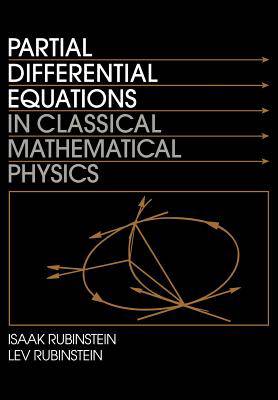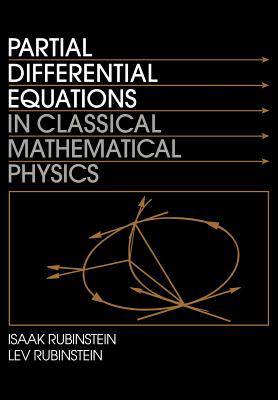
- Afhalen na 1 uur in een winkel met voorraad
- Gratis thuislevering in België vanaf € 30
- Ruim aanbod met 7 miljoen producten
- Afhalen na 1 uur in een winkel met voorraad
- Gratis thuislevering in België vanaf € 30
- Ruim aanbod met 7 miljoen producten
Zoeken
Partial Differential Equations in Classical Mathematical Physics
Isaak Rubenstein, Rubinstein, Isaak Rubinstein
Paperback | Engels
€ 164,45
+ 328 punten
Omschrijving
This book considers the theory of partial differential equations as the language of continuous processes in mathematical physics. This is an interdisciplinary area in which the mathematical phenomena are reflections of their physical counterparts. The authors trace the development of these mathematical phenomena in different natural sciences, with examples drawn from continuum mechanics, electrodynamics, transport phenomena, thermodynamics, and chemical kinetics. At the same time, the authors trace the interrelation between the different types of problems--elliptic, parabolic, and hyperbolic--as the mathematical counterparts of stationary and evolutionary processes. This combination of mathematical comprehensiveness and natural scientific motivation represents a step forward in the presentation of the classical theory of PDEs, one that will be appreciated by students and researchers in applied mathematics and mathematical physics.
Specificaties
Betrokkenen
- Auteur(s):
- Uitgeverij:
Inhoud
- Aantal bladzijden:
- 696
- Taal:
- Engels
Eigenschappen
- Productcode (EAN):
- 9780521558464
- Verschijningsdatum:
- 28/04/1998
- Uitvoering:
- Paperback
- Formaat:
- Trade paperback (VS)
- Afmetingen:
- 181 mm x 255 mm
- Gewicht:
- 1161 g

Alleen bij Standaard Boekhandel
+ 328 punten op je klantenkaart van Standaard Boekhandel
Beoordelingen
We publiceren alleen reviews die voldoen aan de voorwaarden voor reviews. Bekijk onze voorwaarden voor reviews.











